4 Developing Information Literacy
Cascadia College COLL101 and Campus Library Team
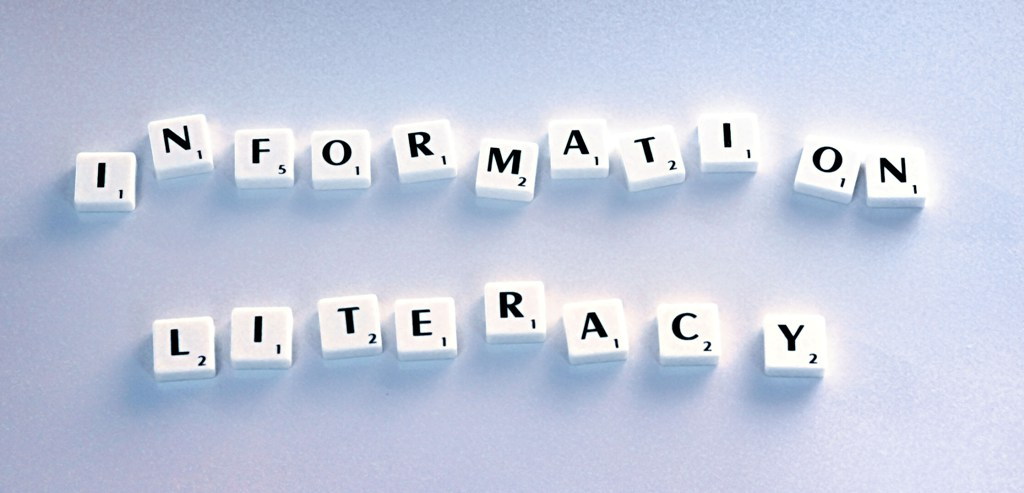
Developing information literacy is an important part of a college education because it is a way in which to become an informed member of society and global citizen. The Association of College and Research Libraries defines information literacy as “…the set of integrated abilities encompassing the reflective discovery of information, the understanding of how information is produced and valued, and the use of information in creating new knowledge and participating ethically in communities of learning.” (2016, p. 12)
The process of developing such literacy may start with becoming acquainted with your Campus Library’s resources and thinking about what you need to do research on, but it quickly becomes much deeper than that. Information literacy is about understanding what kinds of knowledge matter for different disciplines and topics, critically identifying and evaluating appropriate sources and information, and practicing search strategies to locate and access the many different kinds of library resources.
In COLL101, students begin the process of developing information literacy in order to do some basic research. The expectation is that students will continue to develop their information literacy over time, in subsequent courses, after college, and over their lifetimes. Information literacy is something that many will use in their careers, as surveys of graduated college students have suggested (i.e. Fraillon et al., 2020; Travis, 2011). And, as with other literacies, information literacy is a lifelong skill that improves with practice.
This article contains the following sections that will offer information about developing information literacy and opportunities for reflection about the process:
- Part 1 Campus Library Introduction
- Part 2 Critical Internet Searching
- Part 3 Introduction to Campus Library Resources
- Conclusion
- References
Part 1: Campus Library Introduction
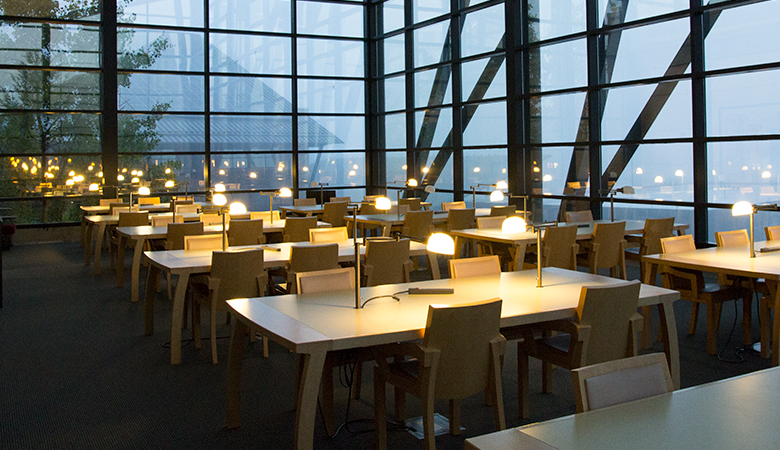
On the University of Washington Bothell and Cascadia College campus, students begin their learning about information literacy at the Campus Library. The Library is part of the University of Washington Libraries system, which operates as one library serving three campuses and is recognized for the exceptional quality of its staff, services and collections. Library staff are leaders in user-centered services, assessment, collaboration, online learning, and innovative pedagogies.
The UW Bothell/Cascadia College Campus Library specific mission is stated below:
The Campus Library supports and enhances teaching, learning, and research at the University of Washington Bothell and Cascadia College. As part of the University of Washington Libraries we acquire and manage material and virtual resources, and promote the creation and use of knowledge in an atmosphere where information and ideas are readily accessible and freely exchanged. (UW Libraries)
Library Services
Thus, like other university libraries, the Campus Library is an active and engaged partner in the creation, dissemination, transformation, preservation, and exchange of new and existing knowledge and scholarship. There are over 9 million volumes available in the library system! These will be very useful to you as a student, in your learning and research. In addition, you might also like to know that the Campus Library is a learning space that recognizes and promotes diversity and where UW Bothell and Cascadia students can read, explore, research, create and collaborate. The library offers a 24/7 Chat with a Librarian service to support your work, as well as computing and printing services, and plenty of study space including private study rooms. As such, students can expect their Campus Library to foster the critical inquiry, information literacy, and research abilities necessary for academic success, and cultivate the lifelong learning skills that students need to be engaged and information-fluent global citizens. (UW Libraries).
Keep in mind that to access most library services and resources, you’ll need to have your UW NetID and password set up. With your UW NetID and password, you’ll be able to access all the library databases, read ebooks and electronic articles online, and reserve physical items to checkout. To learn how to set up your UW NetID and create a password, visit the Campus Library’s webpage: Using your credentials: UW NetID and Cascadia Network Account.
Library Sources Along the Information Spectrum
Now, back to those 9 million volumes! You can think about the Campus Library’s resources as sources of information that fall along the lines of an information spectrum. The information spectrum chart provides a helpful way to identify and evaluate the sources and information you will use for research. Below, the Information Spectrum Chart lists various kinds of information sources and the various places we can find these information sources. Notice that the information sources listed on the left of the dotted line are all found on the Internet and are produced very quickly. Whereas information listed on the right of the dotted line is found in electronic and print formats, and includes scholarly information which cannot always be found freely on the Internet, but can be found in the library.
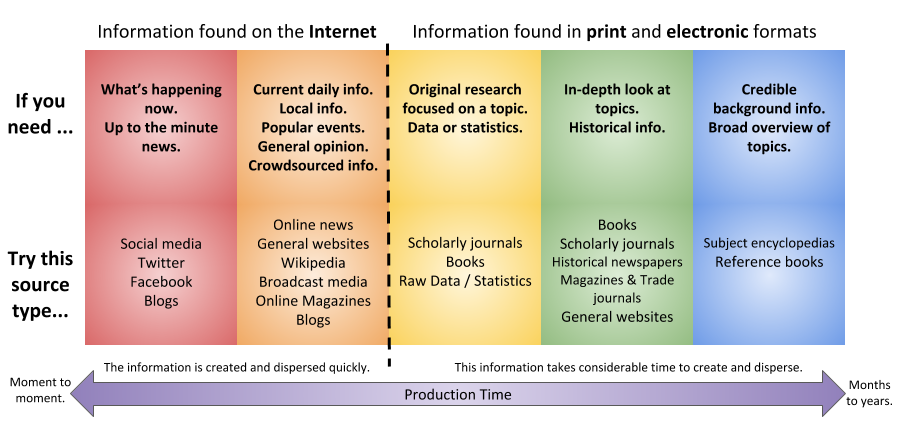
The spectrum helps answer the following questions:
- Where does information come from and what are its unique characteristics? Information found on CNN news is different from The Economist magazine or a book about economics from the library. Why? Because information changes depending on the purpose of the source and as a topic, event or cultural phenomenon develops. One source type is not necessarily better than another; they are all different. You can account for those differences in your research.
- How long does it take to create and share information? Sometimes only seconds, like Twitter posts. Other sources, like subject encyclopedias, can take years to publish. The speed at which information is produced and the reasons why some sources are distributed faster (or slower) than others, helps define a source’s context and purpose.
Before you start research, a good question to ask yourself is: What kind of information do I need? Your class assignment requirements, the subject you are researching, and where you are in the research process should inform your choice of information. Use the Information Spectrum chart to help identify your research need and the types of information sources that correspond with the research need.
Part 2: Critical Internet Searching
As we develop our information literacy skills, we must think critically about Internet searching and the types of information resources we can find freely on the Internet.
What kinds of information can be found on the Internet? Consider the Information Spectrum Chart. The information sources listed on the left of the dotted line are all found on the Internet. This includes information sources such as Wikipedia, online news and broadcast media, online magazines, all websites, social media, and blogs. All this information is produced quickly, sometimes daily, hourly, or even second to second.
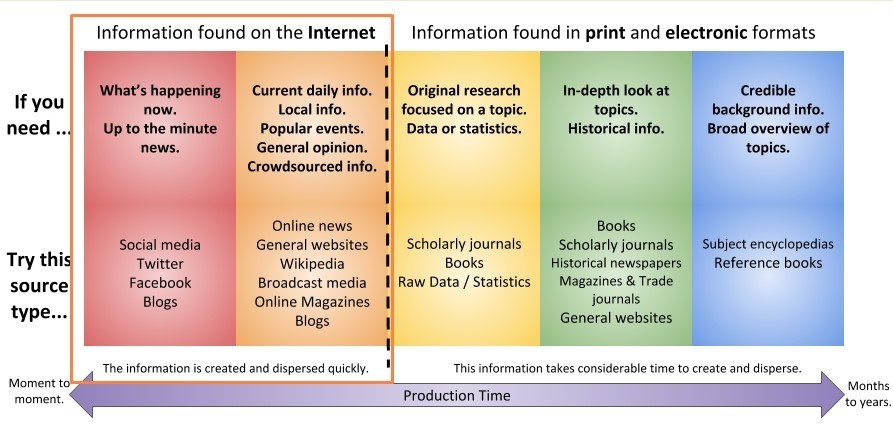
Figure 1: Information Spectrum Chart by Myra Waddell and Caitlan Maxwell. Licensed under CC BY-NC
Many of us tend to use the Internet, or more precisely, Internet search engines such as Google to find the information we need, whether for personal and/or academic purposes. Google is just one example of a popular search engine run by the company Alphabet Inc. Google averages about 3.5 billion searches a day and 1.3 trillion searches a year worldwide (Internet Live Stats.org).
Search Engines, Algorithms, and Bias
Since many people use Google (especially in the United States) on a daily basis to find the information they need quickly, it is important to think critically about how Google actually works. How does the Google search engine come up with the search results for a particular search? How are these search results set up? What information might be left out of a search results list?
Search results are governed by algorithms, which are sets of instructions written by human programmers that tell a computer what to do. Search engines like Google, as well as social media platforms (such as TikTok and Instagram), can use algorithms to react to our search histories and preferences, presenting us with “personalized” content that the algorithms predict is most likely to meet our needs or interests.
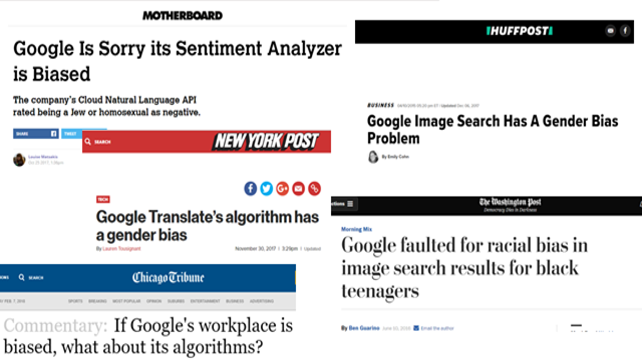
Research has shown that the search results from search engine algorithms also reflect or amplify biases, including gender, racial, political, and others. Professor Safiya Umoja Noble has written a book called Algorithms of Oppression (2018) that studies how search results based on algorithms can perpetuate bias. Dr. Noble’s ongoing research about how search results based on algorithms can perpetuate racism and sexism is described in the video Safiya Noble | Changing the Algorithms of Oppression (2016). While Dr. Noble’s description of her research in this video took place several years ago, her research is ongoing. Today, if you replicate the searches she describes in the video, you will not get results exactly like hers. However, to this day, search results from search engines continue to reflect or amplify biases.
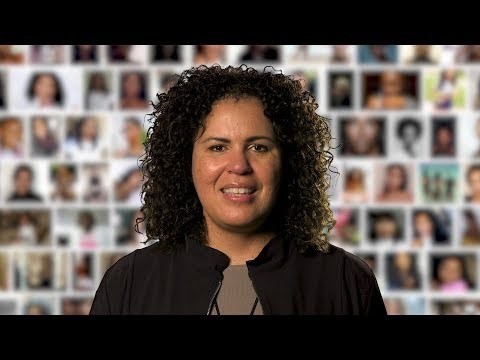
(If you’d like to hear more about the research behind Algorithms of Oppression, watch this presentation from the Personal Democracy Forum 2016.)
Check Other Sources
Now that we have a better understanding of how bias can be present in search engine algorithms, we can begin to think about how to work against these biases by building critical evaluation skills. Chances are you will come across information on the Internet and you will not know how reliable or trustworthy it is. To help determine how true and dependable the information is, try verifying the information with other sources. There are multiple ways to verify information including:
- Searching for information on the author of the source.
- Searching for other sources and checking that they are providing the same or similar information.
- Checking to see what else the source or publication has published.
In the video Skill: Check Other Sources (2020), research scientist Mike Caulfield explains one approach to verifying sources found on the Internet. Watch the video to learn how to use this easy skill anytime you need to check information on the web. If you would like to learn more about sorting truth from fiction, read about Caulfield’s SIFT method (2019). SIFT stands for:
- S – Stop
- I – Investigate the source
- F – Find better coverage
- T – Trace claims, quotes and media to the original text
Online News Articles
News articles are a popular source of information that can also be found using Internet search engines. (Sometimes such articles pop up on our social media newsfeeds too.)
How do we specifically search for news articles? The Google platform provides a few different specialized search engines, such as Google News, an aggregation service that collects articles from news websites and newspapers all over the world. It’s a useful source for finding reports and stories covering the same topic from varying perspectives. You can use Google News to start looking for some current stories and reports on your research topics.
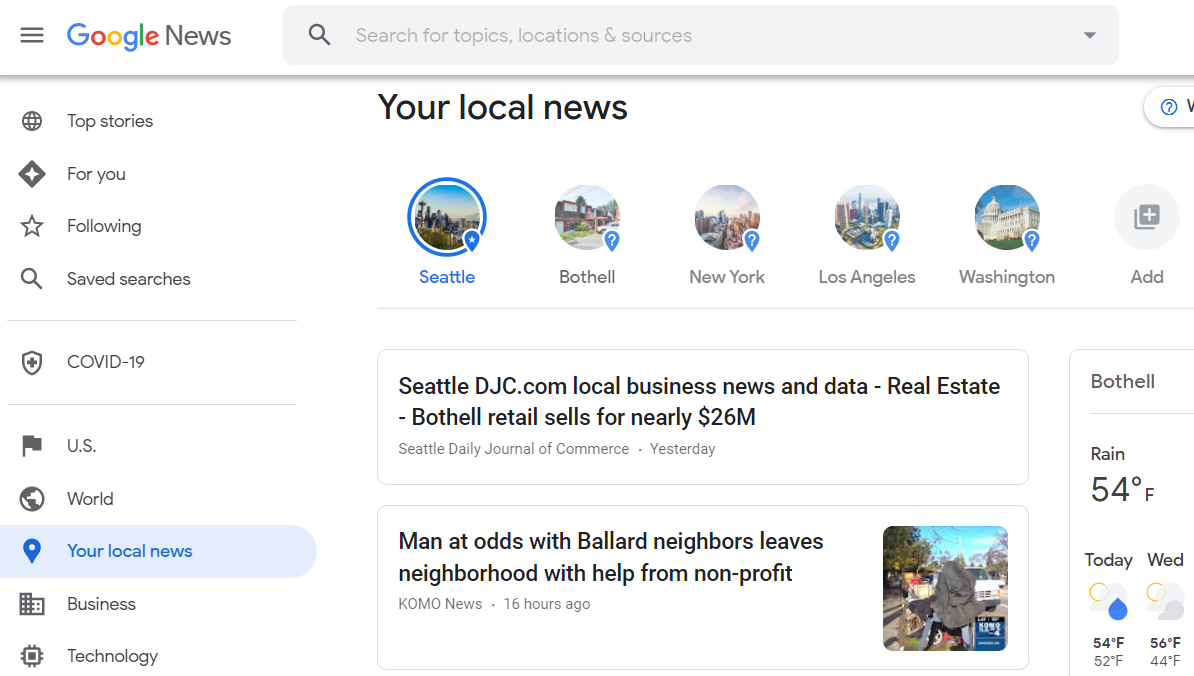
As mentioned above in “Check Other Sources”, there’s a good chance you’ll come across information on the Internet and not know how reliable or trustworthy it is. This includes the trustworthiness of news articles. Often news articles are written by skilled journalists and reporters, though sometimes news reporting can be questionable. In reality, fake news, disinformation, and misinformation exist in the information landscape. It is our job as students, researchers, and information consumers to be vigilant about detecting misinformation and opting for the highest quality news sources available.
How can we identify fake news, misinformation, and disinformation? How can we determine if a news source (or any information source) is trustworthy and reliable? For starters, we can use the skills we learned above in “Check Other Sources.” In addition, the Campus Library has helpful online guides students can use to practice evaluating information:
- News: Fake News, Misinformation & Disinformation In this guide, students learn about the differences between fake news, misinformation, and disinformation. As well as discover online tools and tips for detecting fake news.
- Evaluating Sources: How do I tell if this is a good source? Whether students desire to evaluate a journal article, website, news source, blog post, book chapter, or any other source of information, this guide outlines strategies to evaluate information quality and determine if information is appropriate for academic use.
The process of learning how to evaluate information may feel overwhelming and complicated at first. The more you practice, the easier it becomes. With practice you will strengthen your information literacy skills and become a more informed and skilled information consumer.
Wikipedia
Wikipedia is a free and very popular tool for finding background information that is used by millions of people every day. When searching in Google, links to Wikipedia pages often appear at the very top, or close to the top, of the search results list. By allowing Wikipedia to usually appear near the top of the results list, Google is anticipating its users to use Wikipedia for their information needs. When using Wikipedia for research, we must keep these three things in mind:
- Wikipedia is written by members of the public. Sometimes, the authors are experts, though it is not always easy to find out who the authors are or what their expertise is. Often, the authors are not experts at all. Anyone, including you, can create an account with Wikipedia and edit the content on any Wikipedia page anytime you want. Since the content on a Wikipedia page can be edited by anyone at any moment, the content is typically not considered reliable.
- Many Wikipedia pages include citations at the bottom, which can sometimes help you locate more authoritative sources of information. However, not every citation in Wikipedia is factual or trustworthy.
- Wikipedia is a great tool to help you start learning more about a topic, discover related topics, or to direct you to other resources. However, it should not be your most significant source of information, and it should not be cited in academic papers or included in your bibliography.
As you progress through your academic career, you will get better at identifying appropriate and inappropriate sources of information for different purposes. This is a part of becoming information literate.
Opportunity for reflection:
- Now that you’ve learned that researchers, like Dr. Noble, are surfacing aspects of bias in internet search algorithms, reflect on a time when your searches returned content that you were not expecting and how that felt for you.
- What is one company, product, or site that you use to get information online? How do you decide whether to trust what you find there?
Part 3: Introduction to Campus Library Resources
The Campus Library has many resources available to Cascadia and UW Bothell students. This section will introduce you to several resources that you can use throughout your academic career.
While Internet search tools like Google, Google News, and Wikipedia can be used to get very current news or crowdsourced information, you will often need credible information from qualified sources or an overview of topics for research. Especially if you are not very familiar with the subject you are researching or have not decided which aspect of the subject you want to focus on.
Information search tools housed within library websites –also known as library databases–are especially good choices for finding background information on research topics because they are generally trusted, academically-curated collections of information. Library databases can be used to find subject encyclopedia articles and reference books, and they can also lead you to scholarly journal articles and popular books. These are the kinds of sources you would find on the right side of the Information Spectrum. They tend to be produced by qualified sources, say, by experts in the fields, and they offer information that is consistent with other information. Information resources like books and encyclopedias dive deeper into topics and take a long time to produce, sometimes months or up to years.
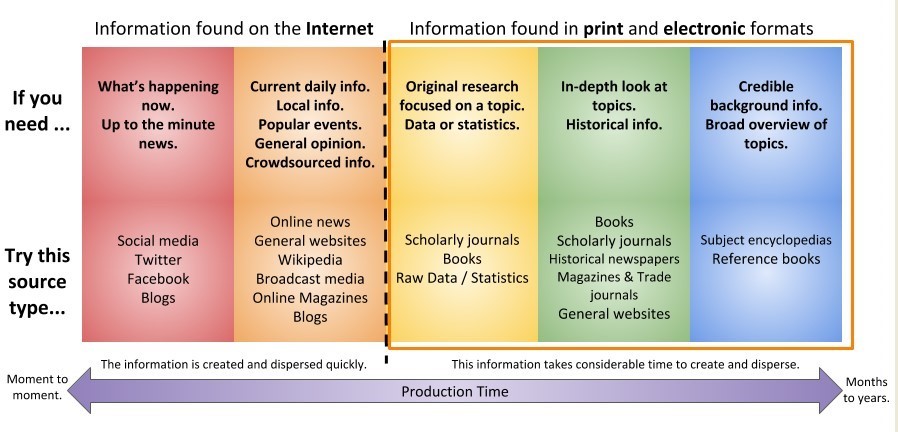
Using Keywords to Search for Topics in the Library Databases
Searching in the Library’s databases or within subject encyclopedias is a little different than searching Google or Wikipedia, but it does require something a little like identifying hashtags that lead you to social media posts on certain topics. Since most library databases can’t understand the natural language we’d use while speaking or writing (e.g. full, complex sentences), you need to brainstorm keywords related to your topics. These are like database ‘hashtags’. Brainstorming a list of keywords will help you search library databases more efficiently and effectively. If one keyword isn’t finding relevant results, try another; finding the right keywords can unlock a whole world of information.
Library database keywords can be synonyms, broader or narrower terms, and related terms, but they might also be phrases, names or places. For example:
tent cities
While using the key phrase ‘tent cities’ will probably give some results in the library database, it’s a pretty broad topic. We will get better and more useful results by being more specific. Being more specific means brainstorming a lot of keywords or phrases related to the topic. You might ask yourself some of the big questions around your topic: who, what, where, when, how.
For example, think about who is creating and using tent city spaces, and who is not. Think about what these spaces are and what they mean for the people living there. Think about where they are being built, when they were or are being built, and how they are being built. Think about how these spaces are being treated and talked about by media, lawmakers and citizens who are both insiders and outsiders to the culture of tent cities.
As you think in these terms, pull out the main words or phrases that come up for you when you think of ‘tent cities’. For example:
- Who: homeless, protestors
- What: housing, movement
- Where: legislation, treatment
Using ‘tent cities’ plus the additional keywords above, in combination with each other, creates search strategies that work very well in library databases.
Opportunity for Reflection:
What might be some possible keywords for a research topic of yours?
Academic Encyclopedias: Gale Ebooks
When you begin researching a topic, you’ll want to start with finding background information. This is especially important if you are not very familiar with the subject you are researching or if you have not decided which aspect of a topic to focus on.
One library database you will encounter in the Campus Library that is a fantastic option for finding background information is a resource called Gale Ebooks.
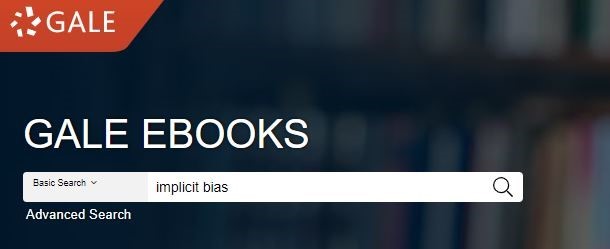
Similar to how you might use Wikipedia to search for basic information, Gale Ebooks can be used to find background information on topics because it is a collection of online academic encyclopedias and other reference sources, including introductory resources for most subject areas. The developers of the articles in Gale Ebooks have expertise in the topics they write about. Each article includes citations and references that are attached to the information so that one can do deeper research and assess the reliability of the source, which is an important quality in academic research. Gale Ebooks is an excellent resource for academic research and can be cited in class assignments.
Gale Ebooks is available to library users through a subscription that the library has purchased. Access to academic encyclopedia databases like Gale Ebooks are a privilege to college students and other users of academic libraries. Keep in mind that Gale Ebooks is just one encyclopedic resource available through the Campus Library. Students can access a list of available encyclopedias, including Gale Ebooks on the Encyclopedias & Dictionaries page of the Campus Library Website.
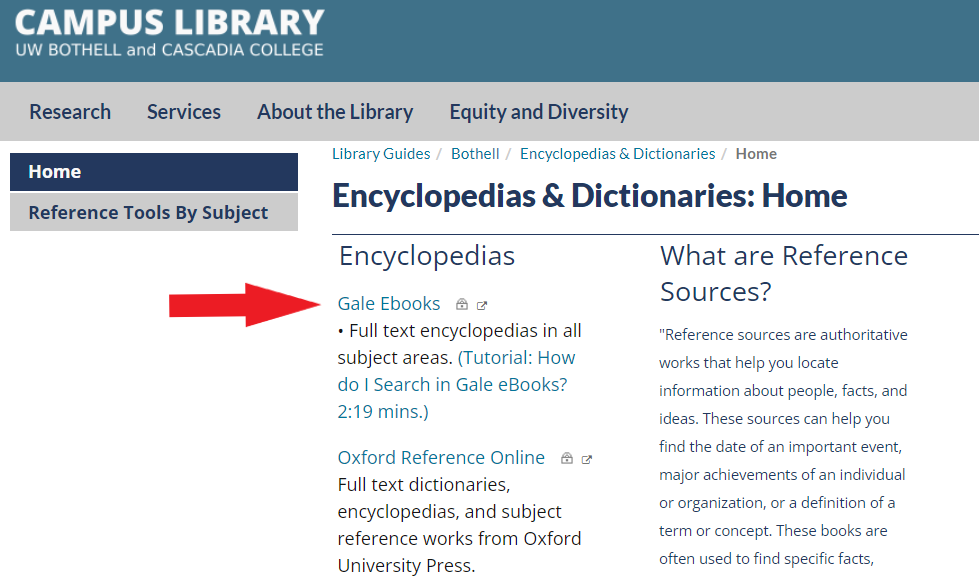
UW Libraries Search: Finding Print Books and Ebooks
In addition to individual encyclopedia databases, UW Libraries has one primary database, called UW Libraries Search that can be used to find all sorts of information, including print books and electronic books (ebooks) available through the UW Libraries. Like online encyclopedia collections such as Gale Ebooks, general reference books can provide background information and broad overviews of a topic or event, as well as provide more in-depth coverage and analysis. It isn’t always necessary to read an entire book; often you’ll find that a chapter or two will be most relevant.
Locating the UW Libraries Search box is easy! You can find the search box on the Campus Library homepage.

Ebooks in UW Libraries Search
Let’s take a moment to focus on searching for ebooks. An ebook is a book that is accessible electronically. Meaning, the book’s contents (the text and images) can be read online. A large percentage of the books available through UW Libraries are available in the ebook format and therefore accessible whenever you work online.
When using UW Libraries Search, students can adjust their search results by limiting to ebooks, which instructs UW Libraries Search to show ebooks in the search results list. Students will be able to recognize ebooks in the search results list by the “EBOOK” indicator above the book title. In the screenshot below, notice that UW Libraries has both print and electronic copies of Dr. Noble’s Algorithms of Oppression. Also notice that the ebooks filter has been selected and above each title on the list, BOOK or EBOOK is indicated.
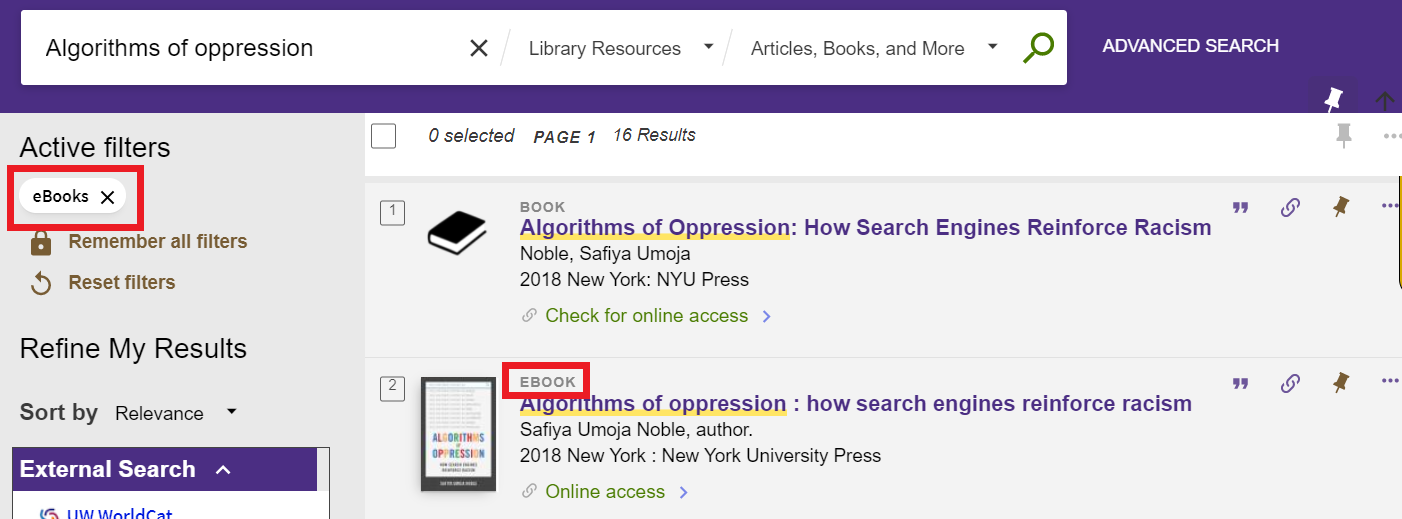
To read an ebook, you will first need to be logged in with your UW NetID and password. Then, select the ebook you wish to read by clicking on the title. This will lead you to a page with instructions on where to view the ebook. Here are helpful tips to keep in mind when using ebooks:
- Each ebook comes with its own license agreement that details how many people can read an ebook at the same time. Some ebooks can be read by multiple people at once, while others can only be accessed by one person at a time. Sometimes students will try to access an ebook but receive a message indicating the ebook is in use. When this happens, the student should try accessing the ebook again later on.
- Sections of ebooks, such as individual chapters, can be downloaded and printed. At times, it is preferable to read content in print. An entire ebook cannot be printed; however, students can choose specific chapters or subsections of text to print. Students should look for a printer icon near the top of the ebook interface; here is where instructions on printing can be found.
Print Books in UW Libraries Search
Cascadia Students have access to thousands of print books at the Campus Library, as well as access to all the hundreds of thousands of print materials at the UW Libraries in Seattle and Tacoma. Students can place holds on books at Seattle or Tacoma and UW Libraries will transport them to the Bothell campus for free, where they can pick them up at the Campus Library.
Similarly to how UW Libraries Search is used to find ebooks, a search can be configured to show only “print books.” Records for print books will indicate which UW library the book is located at (Bothell, Tacoma, or a branch of the UW Libraries in Seattle).

Physical books are assigned a call number, which is a code that organizes books by subject and indicates where the book is located in the library. Call numbers were established by the Library of Congress in Washington, D.C.
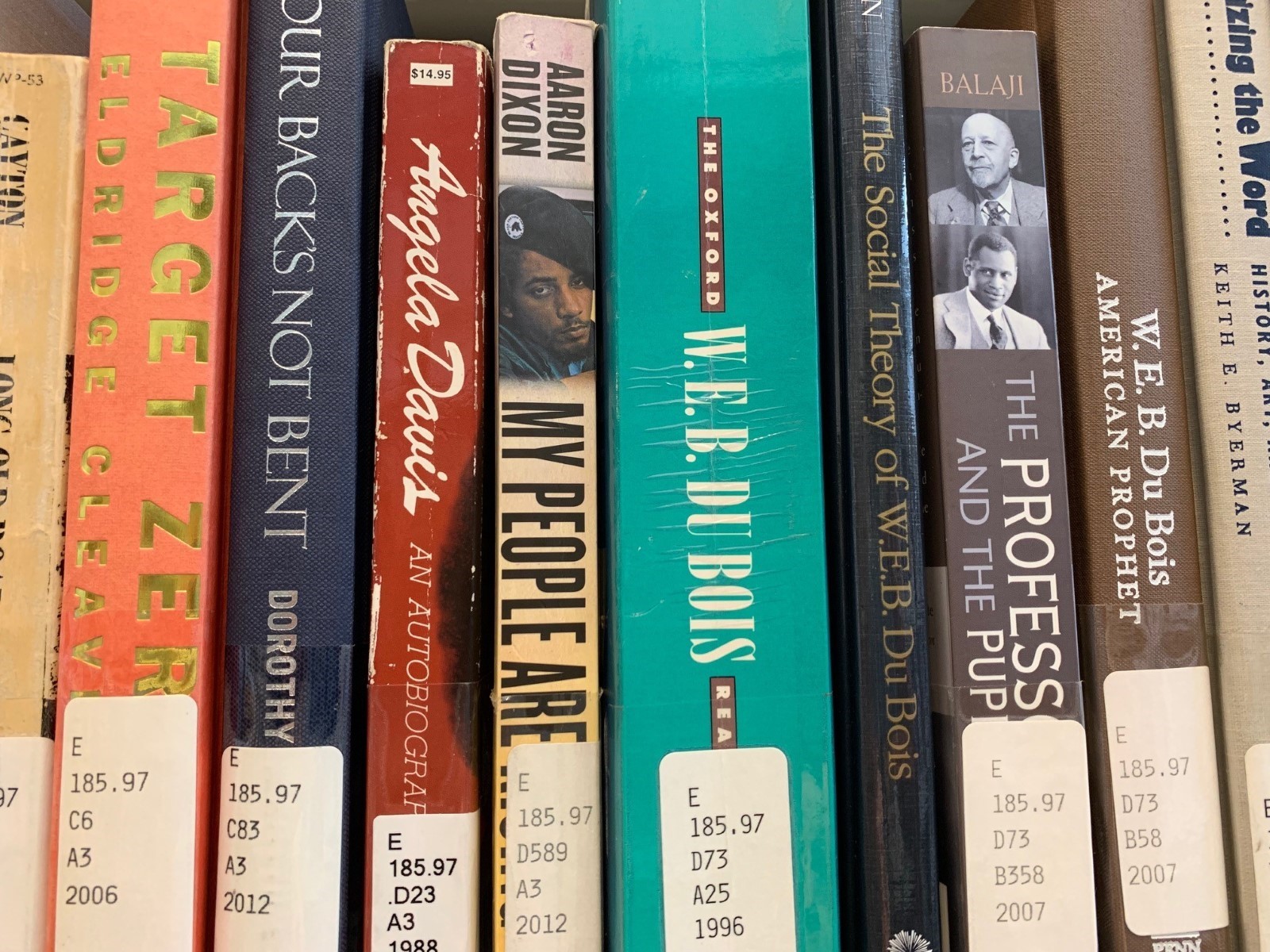
You will most likely be able to locate a print book at the Campus Library within the third floor “stacks”. Though some books are also shelved on the first floor. The stacks are arranged alpha-numerically using the Library of Congress call number system. Library maps are available to help users locate sections within the stacks. This map of the third floor shows where the stacks begin at A and end at Z:
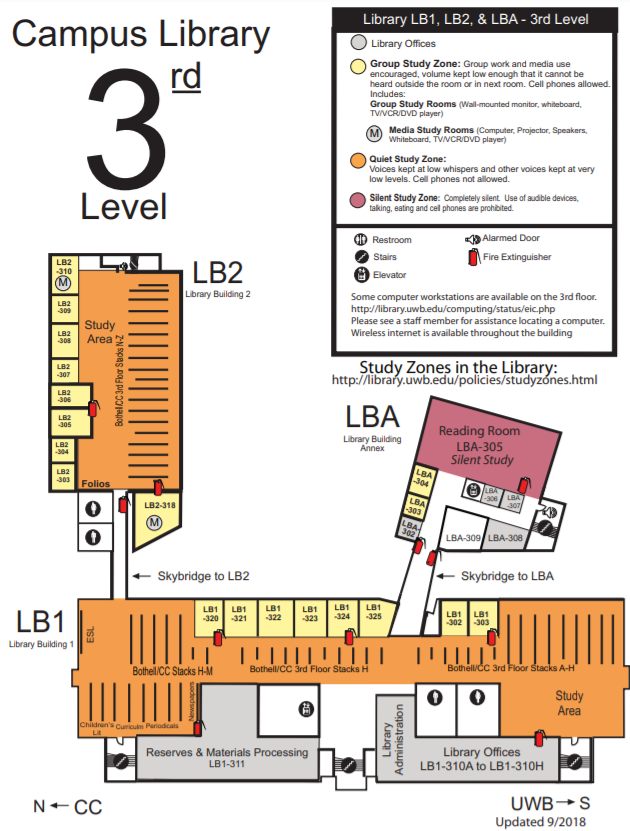
A map of the entire Campus Library can be downloaded as a PDF.
While in the stacks, you might explore or ‘browse’ the area around your chosen book because other books on the related subjects will appear near each other in the stacks.
Physically going into the library’s stacks, tracking down print books on the shelves, and exploring how they are organized, may be different from what you’ve experienced in libraries before. Going into the Campus Library though is a quintessential college student experience. You might even discover a quiet study carrel, the beautiful reading room, or a study room you can use.
Checking Out Books and Your Library Account
If you would like to check out physical materials from the Campus Library, such as books or video games, you will need to activate your library card (which is also your CC student ID card). Cascadia students can get their student ID card at the Bock Learning Center. Once students have their ID card, they can bring it to the Campus Library where library staff will activate the card at the front desk.
Opportunity for Reflection:
If you were going to teach a fellow Cascadia student one thing about the Campus Library, what would it be?
Conclusion
Throughout this article on Developing Information Literacy, students were introduced to Campus Library services and resources, and to basic research skills that can be used to achieve information literacy. A few learning outcomes from this chapter include:
- Consulting with the Information Spectrum Chart to help determine what types of information sources can be used to meet specific information needs.
- Developing critical internet searching skills when searching for information on the free Internet. Critical internet searching includes understanding how algorithm biases affect search results and critically evaluating the credibility of sources found on the web.
- Using Campus Library resources for finding background information in academic encyclopedias, and for finding print books and ebooks in UW Libraries Search.
Don’t forget that the library is supported by people—by its users, and by the librarians and library staff who help them. Librarians are available as resources to you. They can answer quick reference questions and are also available by appointment for individual or group research consultations. Students can connect with a librarian through the Campus Library’s 24/7 chat service, by emailing questions to the Library’s e-reference service, or by reaching out to individual librarians. More information about how to contact the library can be found on the Campus Library’s Ask a Question webpage.
Finally, recognize that the achievement of information literacy is a lifelong activity, and you will become more adept at it as you do it over time. With practice you will learn how to create effective keywords, how to assess the sources of information you find, and how to take full advantage of the more sophisticated tools and information sources available in academic libraries like our Campus Library. Becoming an informed, global citizen depends on it.
References
Association of College and Research Libraries (ACRL). (2016). Framework for information literacy for higher education. From http://www.ala.org/acrl/standards/ilframework
Caulfield, M. (2019, June 19). SIFT (The Four Moves). Hapgood, Mike Caulfield. https://hapgood.us/2019/06/19/sift-the-four-moves/
Caulfield, M. [CTRL-F]. (2020). Skill: Check Other Sources [Video]. YouTube. https://youtu.be/h3TsGe0D3o4
Fraillon, J., Ainley, J., Schulz, W., Friedman, T. & Duckworth, D. (2020). Preparing for Life in a Digital World IEA International Computer and Information Literacy Study 2018 International Report (1st ed. 2020. ed.). Cham: Springer International Publishing : Imprint: Springer. From https://library.oapen.org/bitstream/handle/20.500.12657/39546/2020_Book_PreparingForLifeInADigitalWorl.pdf;jsessionid=7812A3F5CC2918FF79DC27C2F43518B6?sequence=1
Internet Live Stats.com. (n.d.) http://www.internetlivestats.com/
Noble, S. [PdF YouTube]. (2016). Safiya Noble | Changing the Algorithms of Oppression [Video]. YouTube. https://youtu.be/iRVZozEEWlE
Noble, S. (2018). Algorithms of oppression: How search engines reinforce racism. New York: New York University Press.
Travis, T. (2011). From the classroom to the boardroom: The impact of information literacy instruction on workplace research skills. Education Libraries, 34(2), 19-31.
UW Libraries. (n.d.). UW Bothell Campus Library homepage. From http://library.uwb.edu/

